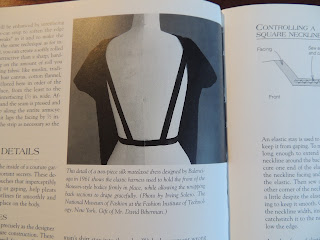Two months ago the world became a slightly less fun place
when Prince left us. Since purple is also one of my favorite colors, I was inspired to honor him with a purple dress. What do you think?
I actually finished it in just a week, but I didn't like how the draped front was hanging. So it has taken me another 6 weeks to get over my disappointment and come up with a solution. Do you think it worked?
But let's start from the beginning. The pattern is a lovely draped model from Burda: 09-2015-107.
It is a faux-wrap dress, so the sides are seamed together and the dress closes with a zipper on the side. Burda shows two versions, one in stretch satin and the one above which is described as "double knit 54% cotton, 28% wool, 18% polyester". From the photo, the fabric does appear lighter, or at least thinner than the one I used. My fabric is a lovely Tom & Linda Platt wool double knit from Paron Fabrics in NYC. But it turned out to be too heavy for this pattern, as we shall see.
According to Burda, the satin version of the dress is self lined and the double knit version uses facings and no lining. For mine, I wanted a full lining and no facings in case the wool was a little bit itchy (the wool feels lovely and soft to the hand, but after 10hrs of wearing...). In the depths of my stash I found a stretch georgette in the perfect shade of purple that was just begging to become the lining. I felt so lucky to have found it, but we've heard that before. I think as a lining it is probably weightier than I can afford, so this lucky find only compounded the problem.
The draped fronts (both upper and under skirts) have an edge that hangs on the bias, rather than straight. With my Christopher Kane knock off dress I learned the hard way that a diagonal edge must, MUST, be stabilized. So I used strips of interfacing for the edges of the lining and "Vlieseline vormband" for the edges on the wool. The vormband is a strip of interfacing that has additional nylon threads woven into the strip for strength and durability, plus a chainstitch to prevent any stretching at all. Click on the photo below to see what it looks like up close (on the right). It works beautifully on necklines and also on these diagonal edges of the skirts.

The dress went together pretty easily. It has become a habit of mine to avoid zippers if at all possible. So with this stretch fabric I used the serger for all seams except the shoulders. At the shoulders I used a strip of non-stretch selvedge to avoid any stretching at all. The slightly tricky bit was attaching the lining at the side seams. One side can be free (the lining hanging free from the wool as in any regular dress), but because it is a wrap and the two fronts overlap each other, there is by necessity one side where the wool side would have to "pass through" the side seam in the lining. Since I wanted to do justice to this nice wool fabric, I decided that I didn't want to just serge everything together and have the seam exposed on the inside. So I seamed together five pieces: two wool fronts and their respective linings and the wool back. Then, by hand I attached the back lining in such a way as to hide the serged seam. It is the first time that I do this and it went quite fast. The crucial bit was folding the seam allowance of the lining with an iron, so that I had a crisp edge to follow when attaching the lining by hand.

I liked so much how this finish looked that I attached the lining sleeves in the same way. Oh, that reminds me. The biggest change I made to the dress were the sleeves. The pattern has you cut short sleeves on the bias. I didn't have enough fabric for that, plus I wanted long sleeves since the dress in wool will be warm. So I used the sleeves from McCall's 6844 instead.
The neckline is somewhat low but not too indecent, except if it opens as I move around. To avoid that, I tried my usual fix: a couple of stitches at the v-point. But tight stitches on this fluffy knit created a dimpled look that wasn't pretty. So, instead I made a couple of loose-ish catstitches all along the overlap in the neckline making sure that I didn't catch the top layer, only the seam allowances. This holds the neckline closed but still allows movement and it is completely dimple-free on the top (visible) layer.
So far so good, right? But when I tried the dress on, the fit was fine but the fabric is too heavy, and the draped fronts weigh the entire dress down. I could feel it stretching from my shoulders and also pulling the side seams towards the front. I didn't make any photos to show you but believe me when I say the side seams were all distorted. Here you can see how, even with the harness, the side seam gets pulled to the front.
Argh! What could I do?? To despair and dump it on a corner with a big "Humph!" is all I could think of at first. Once calmer I remembered Claire Shaeffer's instructions about waist stays to support heavy skirts. Her book Couture Sewing Techniques even shows a waist stay with shoulder straps from a Balenciaga dress!
So I set to work and here again, would you believe what I found in my stash? Indeed, a gorgeous gros grain ribbon in perfectly matching purple! I love how consistent I am with my favorite colors...
My waist stay attaches at the side seams, where the draped fronts also join the side seams and pull them towards the front. It closes with two hooks and eyes that never touch the skin (Claire's instructions of course!). The waist stay is snug but not tight, so that I can sit and move around comfortably. I definitely feel the weight of the skirt on the stay, so I can tell it is doing its job.
The shoulder straps only attach at the waist (front and back), but not at the shoulders. Also the length of the straps is not yet final, as you can see by those strips that hang past the waist stay at the front. I think I first need to see how the dress behaves before I decide if I want to attach the straps at the shoulders or not. it is definitely a new feeling for me, wearing a harness inside. But it is not uncomfortable and it does seem to help carry the weight of the skirt fronts.
I won't lie to you, it is not easy to put on the dress with the harness. Since there is no zipper it can only go on from the top and you have to get your arms and head on the correct side of the harness shoulder straps or you find yourself half strangled(!) Perhaps I should sew the straps to the dress at the shoulders after all...
So what do you think? Has the harness saved this dress and made it wearable? Or will I just have to accept that this beautiful wool jersey was just too heavy for this design and move on? I also have the feeling that it makes me look fatter than I am, which is reason enough to donate it to a good cause.
I've been thinking so hard about this dress that I have lost all objectivity... so do let me know what you think. And tell it to me like it is, that is what I need to get better at this! The pattern is very nice though, will I be happier if I try it again with a lighter fabric? I think it is definitely worth a second attempt, don't you?
I entered a review of Burda 09-2015-107 at Pattern Review, so others can learn from my mistakes.




















































